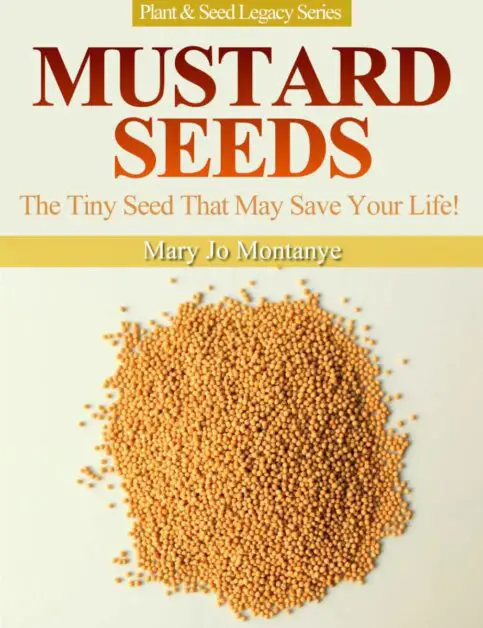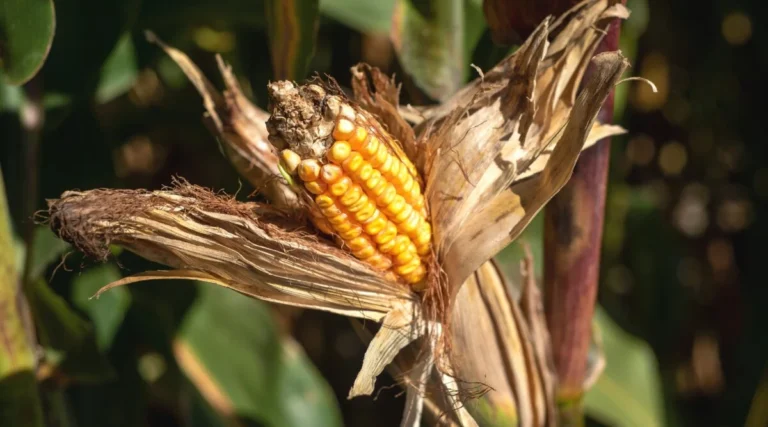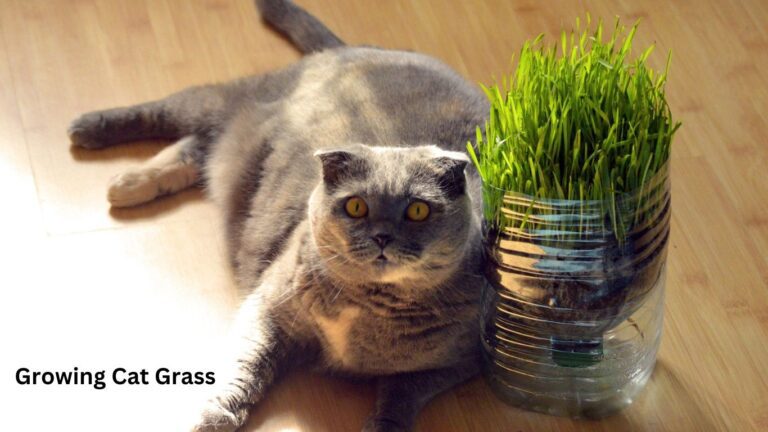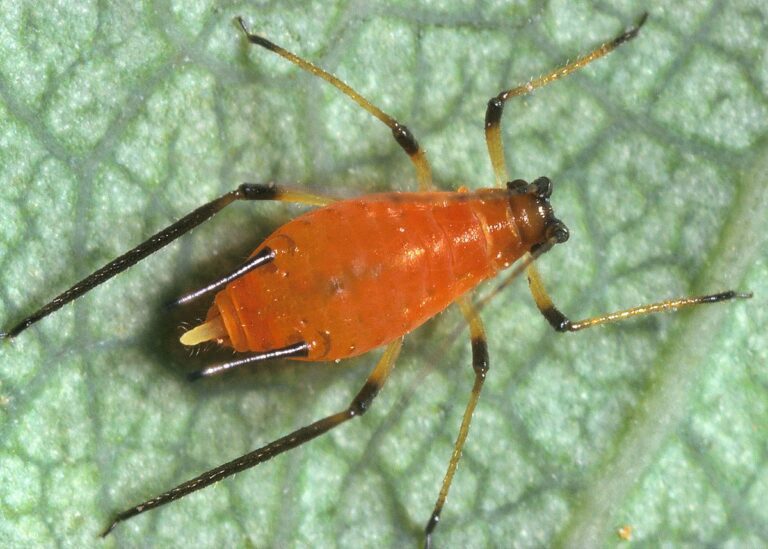Growing Mustard Seed: A Versatile Plant
Did you know that mustard seeds are one of the fastest-growing plants in the world? In just a few days, you can have a lush crop of these versatile plants that can be used for cooking, medicinal purposes, and even as a natural pest repellent.Growing mustard seeds is easy and requires minimal effort, making it an excellent option for both seasoned gardeners and beginners. In this blog, we will explore the different types of mustard seeds, their benefits, and how to grow them in your backyard.
As a professional writer with extensive experience in gardening and agriculture, I will provide you with the latest information and tips to help you grow healthy and productive mustard plants.By the end of this blog, you will have a better understanding of why mustard seeds are a must-have in your garden and how to cultivate them successfully. So, let’s get started and discover the exciting world of growing mustard seeds!
Table of Contents
The History of Mustard Seed Cultivation
Mustard seeds have a rich history of cultivation that dates back thousands of years.
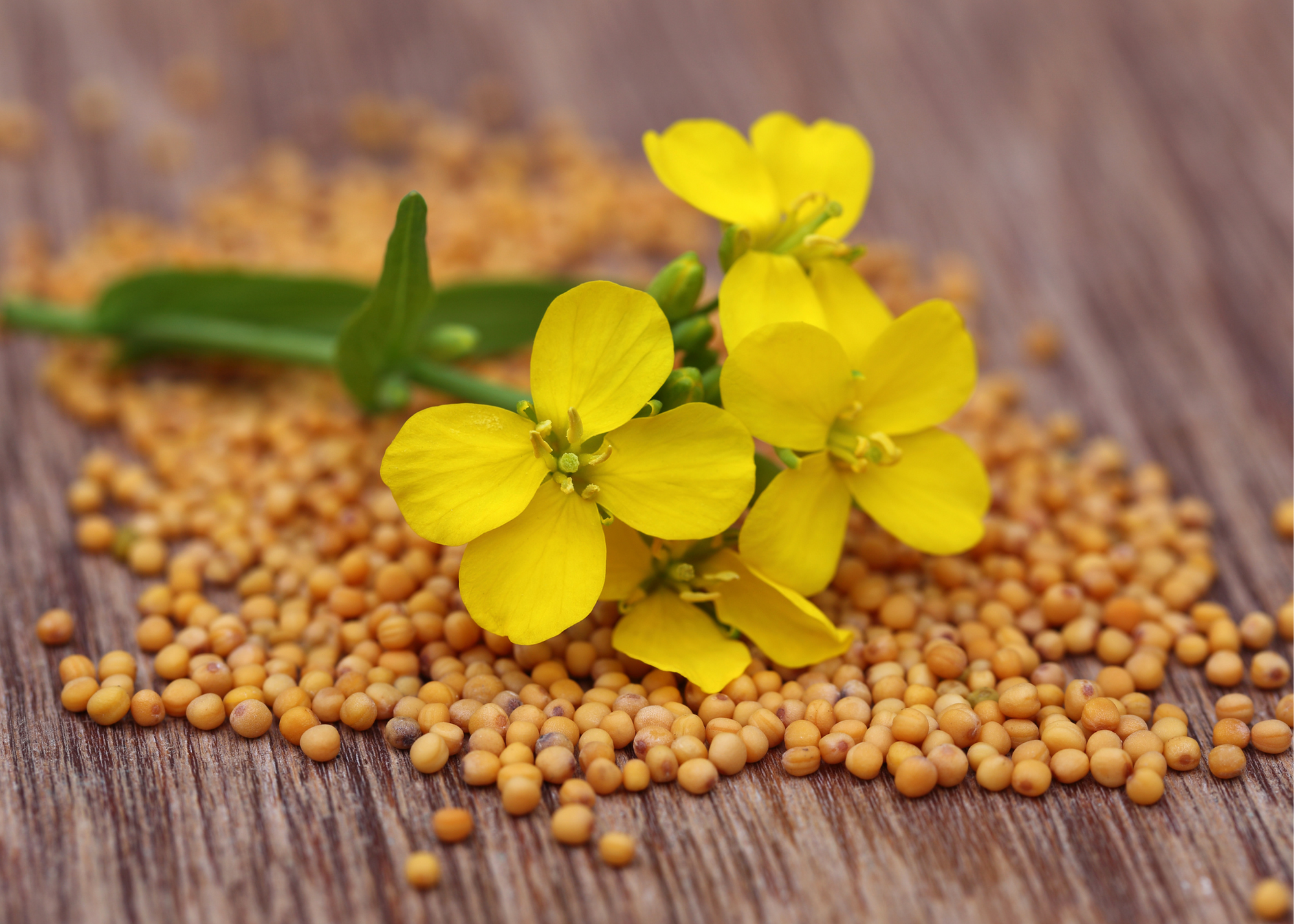
- Ancient Origins:
- Mustard seeds have been cultivated for thousands of years.
- Originated in the Mediterranean region.
- Valued by ancient civilizations (Egyptians, Greeks, and Romans) for culinary and medicinal purposes.
- Spread Across Europe:
- During the Middle Ages, mustard seeds became popular in Europe.
- Thrived in various soil types and exhibited resilience.
- Low maintenance requirements made them ideal for farmers.
- Global Reach:
- Trade routes facilitated the spread of mustard seeds worldwide.
- Found their way to Asia, Africa, and the Americas.
- Today, mustard seeds are grown in many regions, playing a vital role in agriculture.
In summary, mustard seeds have a storied past, transcending time and borders to become an essential crop globally. 🌱🌍
Mustard Seed Varieties: A Comprehensive Overview
Mustard seeds are a staple in many cuisines around the world, and there are various varieties available, each with its own unique characteristics and uses. From mild to spicy, black to yellow, mustard seed varieties offer a wide range of flavors and aromas to enhance the taste and savoriness of dishes.
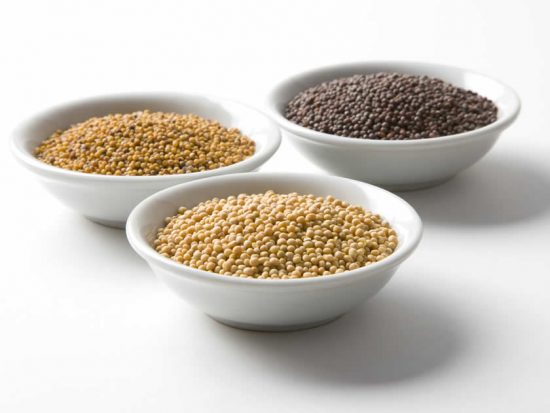
| Variety | Advantages | Disadvantages | Characteristics |
|---|---|---|---|
| Yellow Mustard Seeds | – Mild flavor | – Less intense taste compared to brown and black varieties | – Commonly used for American-style yellow mustard and pickling |
| Brown Mustard Seeds | – Stronger flavor | – Ideal for Indian cooking and mustard sauces | – Main ingredient in various pastes and sauces |
| Black Mustard Seeds | – Spiciest | – Popular in Indian cuisine | – Used in South Indian and Bengali dishes |
| Amara | – Mild | – Easy to grow | – Blue-green leaves, also known as “Ethiopian kale” |
| Florida Broadleaf | – Nutritious | – Easy cultivation | – Blue-green leaves |
| Green Wave | – Fast-growing | – Spicy taste | – Frilly leaves |
| Kodiak | – Versatile | – Robust growth | – Suitable for baby leaves or mature heads |
| Mizuna | – Tender and mild | – Great for salads | – Asian green with serrated leaves |
| Osaka Purple | – Vibrant color | – Adds visual appeal | – Purple leaves |
| Purple Wave | – Unique appearance | – Slightly spicy | – Purple and frilly leaves |
| Red Giant | – Fast growth | – Tall and flavorful | – Large, red leaves |
| Red Tatsoi | – Spicy and tangy | – Compact growth | – Red-veined leaves |
| Rosette Tatsoi | – Tender and sweet | – Suitable for microgreens | – Compact rosette shape |
| Tendergreen | – Versatile | – Mild taste | – Suitable for stir-fries and salads |
| Tokyo Bekana | – Delicate flavor | – Tender leaves | – Light green color |
| Wasabi | – Intense flavor | – Similar to wasabi spice | – Green leaves with a kick |
Overall, understanding the differences between mustard seed varieties can help you choose the right one for your culinary needs. Whether you prefer a milder taste or enjoy a spicy kick, there is a mustard seed variety out there that will suit your preferences and elevate your dishes with its unique flavor and aroma.
The Nutritional Value of Mustard Seed
Mustard seeds are tiny powerhouses of nutrition, packing a punch of essential nutrients that can benefit overall health and well-being. They are a rich source of vitamins, minerals, antioxidants, and fiber, making them a valuable addition to a balanced diet.
- Mustard seeds are rich in essential minerals like calcium, iron, magnesium, and phosphorus, crucial for maintaining healthy bones, teeth, and muscles.
- These seeds provide a significant amount of potassium, essential for regulating blood pressure and supporting proper heart function.
- Mustard seeds offer a generous supply of dietary fiber, with just one tablespoon containing around 3 grams, promoting healthy digestion, preventing constipation, controlling blood sugar levels, reducing cholesterol, and aiding in weight management.
- Packed with antioxidants such as flavonoids and phenolic compounds, mustard seeds exhibit anti-inflammatory, antimicrobial, and anticancer properties, protecting against chronic diseases and bolstering the immune system.
Overall, mustard seeds are a nutritionally dense ingredient that can provide a myriad of health benefits. From promoting bone health to supporting digestion and fighting against chronic diseases, incorporating mustard seeds into your diet can be a flavorful way to enhance your overall well-being.
“Mustard Seeds: The Tiny Seed That May Save Your Life!” by Mary Jo Montanye is a captivating exploration of the healing properties and versatile uses of mustard seeds. As someone who enjoys incorporating natural remedies into my lifestyle, I found this book to be enlightening and informative. Montanye’s detailed insights into the health benefits of mustard seeds, from alleviating migraines to aiding in metabolism, were truly eye-opening. Moreover, her suggestions on incorporating mustard seeds into gardening practices added an exciting dimension to my gardening endeavors. Overall, “Mustard Seeds” is a valuable resource for anyone seeking to enhance their well-being through the power of nature’s remedies.
✅ Practicality: The book offers practical insights on incorporating mustard seeds into daily life, including recipes and tips for using mustard seeds for health and wellness purposes.
✅ User-Friendly Format: With a concise length of 79 pages, the book is easy to read and digest, making it accessible to a wide audience interested in natural remedies and holistic health.
✅ Author Credibility: Author Mary Jo Montanye, based in the Adirondack Mountains of New York, brings authenticity to the topic with her background in writing and publishing eBooks on gardening and wellness.
✅ Positive Reviews: The book has received generally favorable reviews from readers, praising its informative content and practical applications.
❌ Formatting Preference: A few readers have suggested that recipes could have been placed at the end of the book, as they are often skipped over when interspersed throughout the text.
❌ International Availability: While the book is available for purchase on Amazon, it may not be as widely accessible in certain regions, limiting its reach to potential readers outside of Amazon’s distribution network.
❌ Subjective Preferences: As with any book, individual preferences may vary, and some readers may have specific expectations or desires that are not fully met by the content or format of “Mustard Seeds: The Tiny Seed That May Save Your Life!”
Mustard Seed as a Culinary Ingredient
Mustard seed is widely recognized as a culinary ingredient, appreciated for its unique flavor and versatility in various dishes. The small seeds of the mustard plant are known for their pungent taste and aroma, which can range from subtly spicy to intensely hot, depending on the variety. These seeds are commonly used in cooking, both whole and ground, to add depth and complexity to a wide range of cuisines.

- Flavorful Curry Powders: Mustard seeds are a staple in Indian cuisine. They infuse curry powders with a nutty, slightly spicy flavor, enhancing the taste of curries and lentil dishes.
- Pickles and Chutneys: In Middle Eastern and Indian cooking, mustard seeds are tempered in hot oil to release their aroma. They add depth to pickles and chutneys, providing a mild heat and rich nuttiness.
- Classic Mustards: European culinary traditions rely on mustard seeds for making classic mustards. Ground mustard seeds, combined with vinegar, water, and spices, create the iconic Dijon mustard—a tangy, creamy condiment.
- Marinades and Sauces: Mustard seeds contribute zest to marinades and sauces. Their pungency pairs well with meats, fish, and poultry, elevating the overall flavor profile.
- Salad Dressings: Add a burst of flavor to salad dressings by incorporating mustard seeds. Their unique taste complements greens and vegetables.
- Spice Blends and Rubs: Mustard seeds play well with other spices like cumin, coriander, and fennel. Use them in spice blends and rubs for meats, fish, or roasted vegetables.
- Whole or Ground: Whether whole or ground into a powder, mustard seeds offer robust flavor and tantalize the palate.
In the next section, we will delve into the nutritional value of mustard seed and explore its potential health benefits. From its culinary applications to its potential as a natural remedy, mustard seed continues to captivate chefs and home cooks alike, offering a world of possibilities in the culinary realm.
Mustard Seed Oil: Benefits and Uses
Mustard seed oil is a versatile and highly prized oil that has been used for various purposes for centuries. Extracted from the seeds of the mustard plant, this oil is known for its distinct pungent flavor and numerous health benefits.
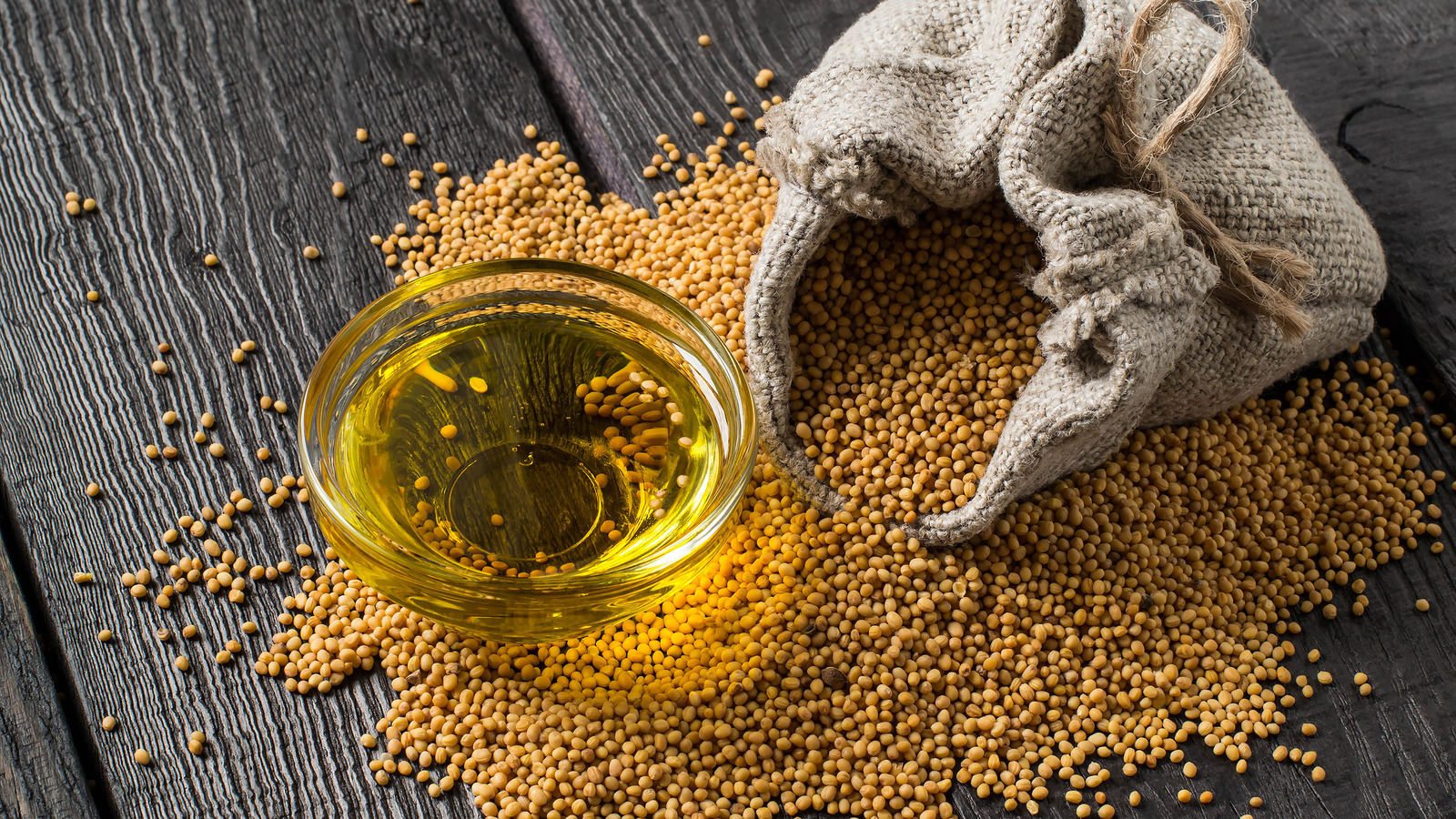
| Benefits and Uses | Description |
|---|---|
| Cardiovascular Health | Mustard oil is rich in monounsaturated fatty acids, which may reduce the risk of cardiovascular diseases such as heart attacks and strokes by maintaining a healthy cholesterol profile. |
| Immune Boosting | Mustard oil contains a variety of antioxidants, vitamins, and minerals that contribute to its immune-boosting properties, helping combat oxidative stress and reduce inflammation in the body. |
| Digestive Health | Mustard oil stimulates the secretion of digestive juices, including bile and gastric acids, which aid in the breakdown and absorption of nutrients, promoting healthy digestion and alleviating symptoms such as indigestion, bloating, and flatulence. |
| Skin Health | Mustard oil moisturizes and nourishes the skin, reducing dryness and promoting a healthy complexion. It contains vitamin E, a powerful antioxidant that protects against free radicals and supports skin cell regeneration. |
| Joint Pain and Inflammation | The warming and anti-inflammatory properties of mustard oil make it a natural remedy for joint pain and inflammation, improving blood circulation to the affected areas and reducing pain and inflammation. |
| Hair Health | Mustard oil is rich in omega-3 fatty acids, which may help decrease oxidative stress and inflammation, promoting hair growth and reducing fine lines and wrinkles. |
| Respiratory Health | Mustard oil is sometimes used as a natural remedy to treat cold symptoms, such as coughing and congestion, although there is currently no evidence to support its effectiveness. |
| Nutritional Profile | Mustard oil is rich in healthy fats like omega 3 and 6, alpha fatty acids, vitamins A, D, E, and K, calcium, iron, magnesium, and protein, all of which are important for hair growth, skin health, and overall health. |
| Anti-fungal Properties | Mustard oil has anti-fungal properties, preventing the development of fungus and dandruff in the scalp. |
| Mosquito Repellent | The pungent and strong smell of mustard oil makes it a natural mosquito repellent. |
In conclusion, mustard seed oil is a valuable oil that offers a wide range of benefits and uses. From its nutritional value and flavorful presence in culinary applications to its potential medicinal properties, this oil has stood the test of time and continues to be valued in various cultures around the world. As we delve deeper into the benefits and uses of mustard seed oil, we gain a better understanding of its versatile nature and potential as a natural remedy.
Mustard Seed as a Natural Remedy for Ailments
Mustard seed has been valued for its medicinal properties for centuries. Traditionally, it has been used as a natural remedy for various ailments, thanks to its rich content of bioactive compounds. These compounds, including glucosinolates, phenols, and flavonoids, contribute to mustard seed’s potential health benefits.

Mustard seed’s pungent aroma and compounds like allyl isothiocyanate act as expectorants and decongestants.
Helps break down mucus and open airways, providing relief for bronchitis, sinusitis, and asthma.
Anti-inflammatory effects further reduce respiratory symptoms.
Mustard seed may possess analgesic properties.
Provides temporary relief from arthritis, rheumatism, and muscle sprains.
External application (paste or oil) generates a warming effect, improving blood circulation and reducing inflammation.
While mustard seed has been used as a natural remedy for ailments, it is important to note that it should not replace professional medical advice or treatment. It is always advisable to consult with a healthcare professional before incorporating mustard seed or any other natural remedy into your healthcare routine.
Mustard Seed in Traditional Medicine Practices
Mustard seed has been widely used in traditional medicine practices for centuries due to its various potential health benefits. In ancient Ayurvedic medicine, mustard seed was believed to possess warming properties and was used to stimulate circulation and detoxify the body.
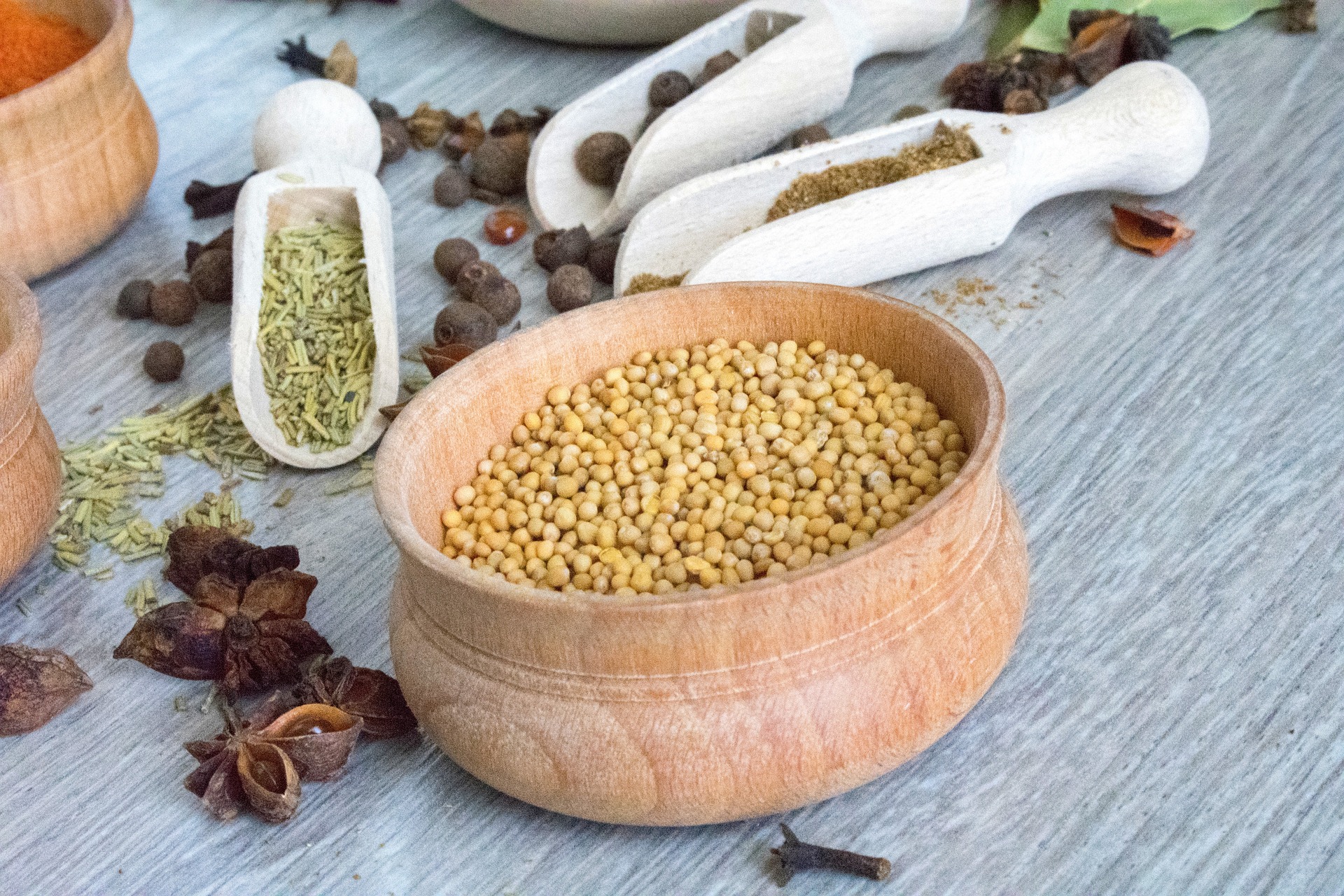
- Cardiovascular health: Mustard oil is rich in monounsaturated and polyunsaturated fats, which are considered heart-healthy fats. These fats may help lower bad cholesterol levels (LDL cholesterol) and increase good cholesterol levels (HDL cholesterol), contributing to overall heart health.
- Anti-inflammatory properties: Mustard oil contains compounds such as omega-3 fatty acids and selenium, which exhibit anti-inflammatory properties. These properties may help reduce inflammation in the body and alleviate symptoms associated with inflammatory conditions.
- Skincare: Mustard oil is often used topically for skin massage. It is believed to improve blood circulation and provide relief from dry and chapped skin. The oil also contains vitamin E, which is known for its antioxidant properties and skin-nourishing effects.
- Rich in antioxidants: Mustard oil contains antioxidants, including vitamin E and selenium, which can help neutralize free radicals in the body. Free radicals are unstable molecules that can cause cellular damage, and antioxidants help protect cells from this damage.
- Respiratory health: In traditional medicine, mustard oil has been used for respiratory issues. It is believed to have decongestant properties and may help clear respiratory passages. Mustard oil vapors are sometimes inhaled to relieve congestion and improve breathing.
- Joint and muscle pain: Mustard oil is often used in traditional massages to alleviate joint and muscle pain. The warming effect of the oil, along with its anti-inflammatory properties, may provide relief from discomfort and promote relaxation.
- Antibacterial and antifungal properties: Mustard oil exhibits antibacterial and antifungal properties, which may help protect the skin and body against certain infections. It has been traditionally used to treat skin infections and wounds.
- Haircare: Mustard oil is rich in minerals, vitamins, and fatty acids that may promote hair health. Massaging the scalp with mustard oil is thought to stimulate blood circulation, strengthen hair, and reduce hair fall. It may also help in preventing dandruff.
While traditional medicine practices have long touted the potential benefits of mustard seed, it is crucial to note that scientific research on these claims is limited. As with any herbal remedy, it is advisable to consult with a healthcare professional before incorporating mustard seed into your health regimen. They can provide personalized guidance and ensure that any potential interactions or contraindications are considered.
Growing Mustard Seed: Climate and Soil Requirements
- Temperature Range:
- Ideal temperatures for mustard seed cultivation: 50°F (10°C) to 85°F (29.5°C).
- Tolerates mild frost down to 25°F (-3.9°C) without significant damage.
- Soil Requirements:
- Mustard seed adapts to various soil types.
- Prefers well-draining soil with a pH range of 5.5 to 6.8.
- Soil rich in organic matter and nutrients promotes healthy growth.
- Soil Testing:
- Conduct a soil test before planting to identify nutrient deficiencies or imbalances.
- Adjust soil conditions using appropriate fertilizers or amendments.
- Beneficial Effects on Soil:
- Mustard seed suppresses weeds and reduces soil-borne pathogens.
- Improves soil structure.
Remember, providing the right climate and soil conditions ensures successful mustard seed cultivation! 🌱🌿
Mustard Seed Planting Techniques and Tips
Planting mustard seeds requires careful attention to detail and specific techniques to ensure successful germination and growth. Here are some tips to help you get started:
1. Soil Preparation: Mustard seeds thrive in well-draining soil with a neutral pH level between 6.0 and 7.5. Before planting, prepare the soil by removing weeds and debris and loosening it with a garden fork or tiller. Incorporate organic matter, such as compost or well-rotted manure, to improve soil fertility and structure.
2. Sowing Depth and Spacing: Mustard seeds should be sown at a depth of about ¼ to ½ inch (6-12mm) in the soil. Space the seeds around 1 inch (2.5cm) apart to allow each plant enough room to grow and develop its root system. If you plan to grow mustard greens for their leaves, you can sow the seeds more densely.
3. Watering: Immediately after planting, water the soil thoroughly to ensure adequate moisture for germination. Keep the soil consistently moist but not waterlogged throughout the growing season. Watering early in the day allows foliage to dry before evening, reducing the risk of fungal diseases.
4. Sunlight Requirements: Mustard seeds prefer full sun exposure for optimal growth. Ensure the planting area receives at least 6-8 hours of direct sunlight daily. Insufficient sunlight may result in weak plants and reduced yields.
5. Temperature and Germination: Mustard seeds germinate best in soil temperatures between 45°F and 85°F (7°C and 29°C). Warmer temperatures promote faster germination, usually within 4 to 7 days. Consider using a soil thermometer to monitor the temperature and adjust planting times accordingly.
Remember, each mustard seed variety may have specific requirements, so it’s advisable to consult seed packets or reputable gardening resources for detailed guidelines. With proper planting techniques and care, you’ll be well on your way to enjoying a successful mustard crop.
I recently used the Taylor Soil Testing Thermometer in my gardening endeavors, and I found it to be a valuable tool for determining the optimal time for planting and seeding. Its easy-to-read dial face provides temperature readings between 20°F to 180°F (0°C to 80°C), with clear min, max, and optimal temperature ranges, eliminating any guesswork. The heavy-duty stainless steel construction and 4″ stem allowed me to measure at least 2″ below the surface for accurate readings. While some customers had concerns about accuracy, I found it to be reliable for my gardening needs. Overall, it’s a handy device for monitoring soil temperature and planning my garden effectively.
- Accurate Temperature Measurement: The Taylor Soil Testing Thermometer provides precise temperature readings, allowing gardeners to monitor soil conditions effectively.
- Wide Temperature Range: With a temperature range of 20°F to 180°F (0°C to 80°C), this thermometer covers a broad spectrum of soil temperatures, accommodating various planting needs and climates.
- Easy-to-Read Dial: The thermometer features a clear dial face with markings for minimum, maximum, and optimal temperature ranges, eliminating guesswork and making it easy for users to interpret the readings.
- Durable Construction: Made of heavy-duty stainless steel, the Taylor Soil Testing Thermometer is built to withstand outdoor conditions and frequent use, ensuring long-term durability.
- Convenient Design: The 4-inch stem allows users to measure soil temperature at least 2 inches below the surface, providing accurate readings for optimal planting and seeding decisions.
- Versatile Use: Suitable for a variety of applications, including planting crops, outdoor gardens, and greenhouse operations, making it a versatile tool for gardeners and agricultural professionals.
- Mixed Customer Reviews: While many customers praise the thermometer for its accuracy and ease of use, some have reported issues with dial rotation and accuracy discrepancies compared to other thermometers. This indicates potential variability in product performance and customer satisfaction.
- Subject to Calibration Variations: Like many analog thermometers, the Taylor Soil Testing Thermometer may require occasional calibration to ensure accuracy, especially if discrepancies are noted compared to other trusted temperature measurement devices.
- Limited Warranty Information: Despite claims of a one-year limited warranty, some users have reported difficulty finding warranty details on the manufacturer’s website or contacting customer support, potentially impacting customer confidence in product reliability and after-sales support.
Mustard Seed Care and Maintenance
Mustard seed care and maintenance are crucial for ensuring healthy growth and optimal yields. To successfully cultivate mustard seeds, it is essential to understand their specific requirements and provide the necessary care.
To grow mustard seeds successfully, follow these guidelines:
- Soil: Mustard grows in most soils, but a fertile, moist, well-draining, slightly acidic soil with a pH below 6.0 is ideal.
- Water: Mustard requires consistent but not excessive moisture, with at least 1 inch of water in the absence of rain.
- Sunlight: Mustard thrives in full sun, with at least six to eight hours of direct sunlight daily.
- Temperature: Mustard is a cool-season crop that can tolerate temperatures down to 32° F (0° C) but does not do well in temperatures over 75° F (24° C).
- Fertilizer: Choose a fertilizer high in nitrogen, following label instructions for the amount. Scatter it around the seedlings when they have reached 3 to 4 inches in height.
- Pollination: Mustard is self-pollinating, but pollinating insects can cross-pollinate the flowers of different varieties, so avoid planting different varieties at the same time if saving seeds for next year.
- Harvesting: For mustard greens, cut them while they are small, young, and tender for salads. For sautéing or other cooking methods, harvest larger leaves.
- Pest control: Monitor the plants regularly and implement appropriate strategies for pest control. For organic gardening enthusiasts, natural pest control methods such as companion planting, insect-repellent plants, and biological controls can be effective.
Additionally, maintaining a soil pH of 6-7 throughout the process of growing and incorporating the mustard is recommended. If the soil is too acidic when the mustard is incorporated, the crop will not release its fumigating properties.
Harvesting Mustard Seed: Timing and Methods
Timing and methods of harvesting mustard seed are crucial for ensuring a high-quality yield.

- Timing of Harvesting Mustard Seed: Mustard seeds are typically harvested when the seed pods turn yellow or brown and start to dry out, indicating that the seeds have matured.
- Hand Harvesting: This method involves cutting the mustard plants at the base when the seed pods are fully developed. The plants are then left to dry in the field for a few days before threshing the seeds out manually.
- Mechanical Harvesting: This method is employed for larger-scale mustard seed production. Combines or harvesters are used to cut and separate the plant material from the seed pods. The harvested seeds are then processed further to remove any impurities and ensure a clean final product.
- Monitoring Seed Pod Maturity: It is crucial to monitor the seed pod maturity before harvesting to ensure optimal yield and quality.
- Proper Drying: Before threshing or processing the seeds, it is essential to dry the harvested plants properly to prevent damage to the seeds.
In conclusion, understanding the timing and methods of harvesting mustard seed is essential for maximizing yield and quality. Whether using hand harvesting or mechanical harvesting, it is crucial to monitor the seed pod maturity and ensure proper drying before threshing or processing the seeds. By following appropriate harvesting practices, gardeners and farmers can reap the full benefits of this versatile and nutritious crop.
Mustard Seed Processing and Storage
Processing and storage are crucial steps in ensuring the quality and longevity of mustard seeds. After harvest, the seeds undergo a series of processes to remove impurities and ensure they are ready for consumption or oil extraction. The first step in processing involves threshing, where the seeds are separated from the seed pods.

- Threshing:
- Separate seeds from seed pods.
- Can be done manually or using machines for larger-scale production.
- Cleaning:
- Remove dirt, debris, and foreign matter from the seeds.
- Use sieves, air separators, or other cleaning equipment.
- Storage:
- Store mustard seeds in a cool, dry, and dark place.
- Minimize exposure to light, heat, and humidity.
- Ideal storage temperature: 10°C to 15°C.
- Relative humidity: Around 50%.
Remember, proper processing and storage ensure the quality and longevity of mustard seeds! 🌱🌿
Mustard Seed in Sustainable Agriculture
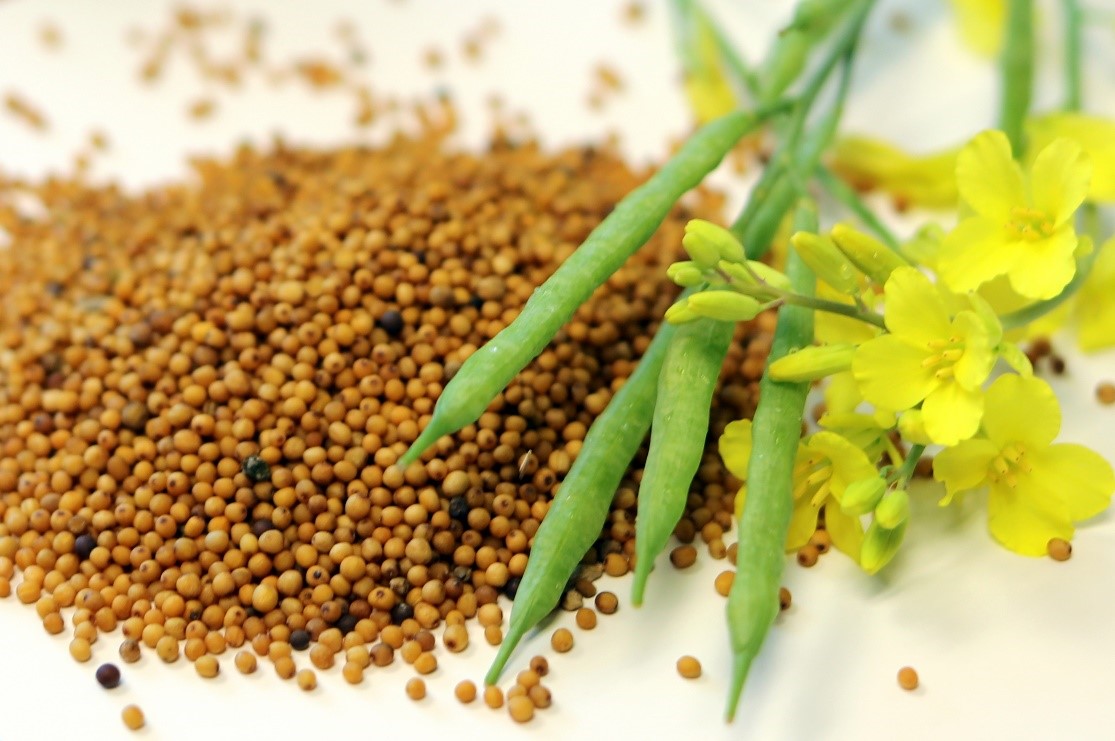
- Mustard seed is recognized for its role in sustainable agriculture due to its fast growth, weed suppression, and natural pest-repelling properties.
- As a cover crop, mustard seed helps prevent soil erosion, enhances soil structure, increases organic matter, improves soil aeration, and boosts nutrient availability for subsequent cash crops.
- Farmers have reported significant enhancements in soil fertility and productivity by incorporating mustard seed into their crop rotations.
- Mustard seed’s biofumigant properties, particularly glucosinolates, release gases that suppress soil-borne pests and pathogens, reducing the need for chemical pesticides and promoting ecological balance.
- Acting as a natural nitrogen fixer, mustard seed enriches the soil with nitrogen through its symbiotic relationship with beneficial bacteria.
- The versatility and sustainable attributes of mustard seed make it a valuable asset in agriculture, aligning well with sustainable farming principles.
- Its potential to improve soil health, suppress pests, and decrease reliance on synthetic inputs positions mustard seed as a key component in the future of sustainable agriculture.
As farmers and researchers continue to explore its potential, mustard seed holds promise as a key component in the future of sustainable agriculture.
Mustard Seed as a Cover Crop
As a cover crop, mustard seed offers a multitude of benefits to gardeners and farmers alike.

- Weed Suppression:
- Mustard seed’s dense foliage crowds out weeds.
- Reduces competition for nutrients, water, and sunlight.
- Saves time and effort on manual weeding and herbicides.
- Soil Health Improvement:
- Deep taproots break up compacted soil.
- Enhances soil structure, water infiltration, and root penetration.
- Symbiotic relationship with soil microorganisms improves nutrient uptake.
- Favorable Environment for Crops:
- Enriches soil with organic matter, nitrogen, and essential nutrients.
- Ideal for crop rotation to rejuvenate soil and prevent disease and pest buildup.
Remember, mustard seed cover crops contribute to sustainable agriculture! 🌱🌿
Mustard Seed in Crop Rotation Systems
Crop rotation is a fundamental practice in sustainable agriculture. It involves the systematic rotation of different crops on a piece of land to improve soil fertility, control pests and diseases, and maximize yields. Mustard seed, with its numerous benefits and adaptability, is an excellent addition to crop rotation systems.
- Weed Suppression:
- Mustard seed’s dense foliage crowds out weeds.
- Reduces competition for nutrients, water, and sunlight.
- Saves time and effort on manual weeding and herbicides.
- Soil Health Improvement:
- Deep taproots break up compacted soil.
- Enhances soil structure, water infiltration, and root penetration.
- Symbiotic relationship with soil microorganisms improves nutrient uptake.
- Biofumigation and Pest Control:
- Mustard plants release glucosinolates into the soil.
- Glucosinolates act as biofumigants, controlling nematodes, fungi, bacteria, and insects.
- Reduces soil-borne diseases and pests.
- Balanced Ecosystem:
- Mustard seed disrupts pest life cycles.
- Contributes to a healthier and more balanced agricultural environment.
Remember, mustard seed is a valuable asset in sustainable agriculture! 🌱🌿
The Future of Mustard Seed: Potential Applications and Research
Watch video for more information:
FAQ
What are some potential applications of mustard seed in the future?
Mustard seed has the potential for various applications in the future, including its use in sustainable agriculture, crop rotation systems, and as a cover crop. It also shows promise in research for potential health benefits and medicinal uses.
Are there any ongoing research studies related to mustard seed?
Yes, there are ongoing research studies exploring the potential uses of mustard seed. These studies focus on its medicinal properties, nutritional benefits, and its role in sustainable agriculture.
Can mustard seed be used as a natural remedy for ailments?
Yes, mustard seed has been used as a natural remedy for various ailments in traditional medicine practices. It has been suggested to have potential benefits for digestion, inflammation, and respiratory conditions, among others.
How does mustard seed contribute to sustainable agriculture?
Mustard seed can be used as a cover crop to improve soil health, suppress weeds, and reduce pests and diseases. It may also have allelopathic effects, releasing chemicals that inhibit the growth of certain weeds.
What are the different varieties of mustard seed available?
There are several varieties of mustard seed, including yellow or white mustard, brown or Indian mustard, and black or brown mustard. Each variety has its own distinct flavor and culinary uses.
What are the nutritional value and benefits of mustard seed?
Mustard seed is a good source of various nutrients, including protein, fiber, and essential minerals such as calcium, iron, and magnesium. It also contains antioxidants and potentially beneficial compounds like glucosinolates.
How is mustard seed oil used and what are its benefits?
Mustard seed oil is commonly used in cooking, especially in Indian cuisine. It is known for its distinctive flavor and aroma. Additionally, mustard seed oil is rich in monounsaturated fatty acids and has potential health benefits, such as reducing inflammation and promoting heart health.
What are the climate and soil requirements for growing mustard seed?
Mustard seed is adaptable to different climates, but it generally thrives in cool to warm temperatures. It prefers well-drained soils with a pH range of 6.0 to 7.5 and can tolerate a wide range of soil textures.
How should mustard seed be planted and cared for?
Mustard seed can be directly sown into the soil or started indoors and transplanted. It requires consistent moisture during germination and establishment. Weeding, pest control, and regular watering are important for its care.
When and how should mustard seed be harvested?
Mustard seed is typically harvested when the pods turn brown and dry. The plants should be cut close to the ground and allowed to dry further. Threshing and winnowing are then done to separate the seed from the plant material.
How should mustard seed be processed and stored?
Mustard seed can be processed by cleaning, drying, and grinding it into powder or crushing it to extract oil. Proper storage in airtight containers away from light and heat is important to maintain its quality and prevent rancidity.
How can mustard seed be incorporated as a cover crop and in crop rotation systems?
Mustard seed can be sown as a cover crop between main crops to improve soil fertility, suppress weeds, and reduce nematode populations. In crop rotation systems, it can be beneficial for breaking pest and disease cycles and improving soil health.

Studied Agricultural Engineering-Plant Protection at University of California, Davis.
Head of Content writing team at Southelmontehydroponics.com


